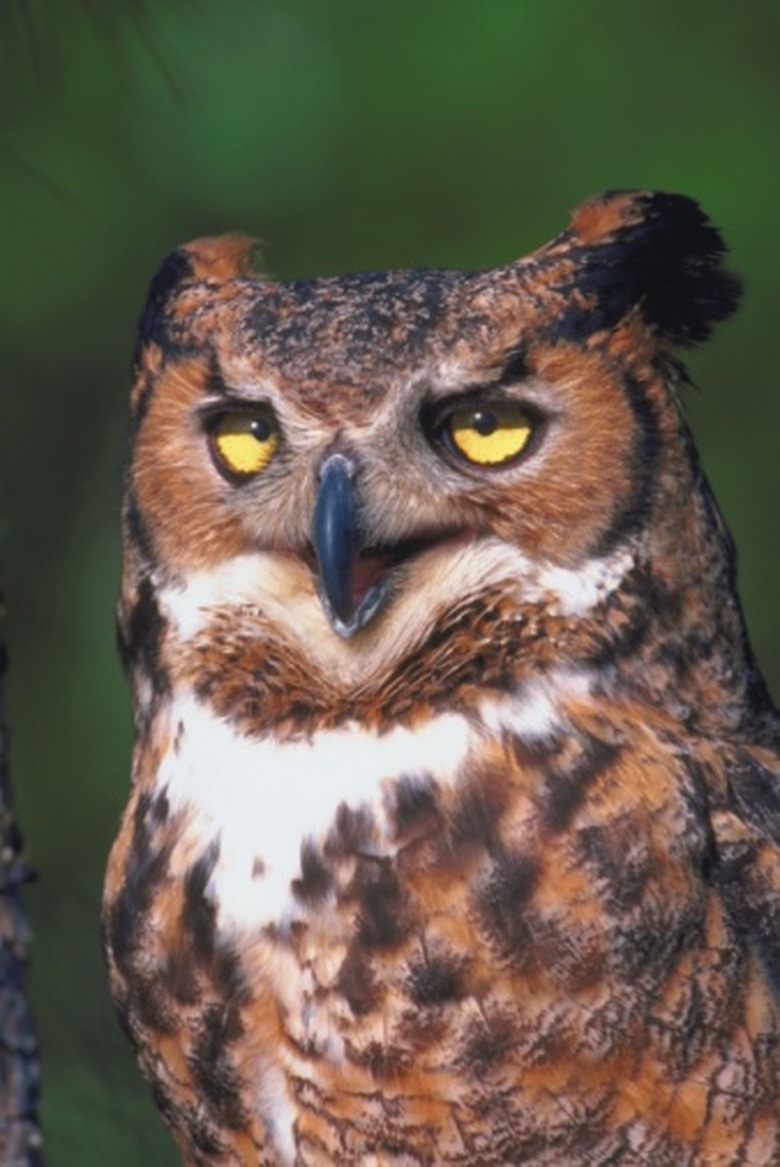Common Carnivores In The Temperate Forest
Temperate deciduous forest biomes go through four distinct seasons with hot summers and cold winters. They get moderate precipitation (on average 30-60 inches annually) that includes rain and snow; they're found at midrange latitudes in places like the eastern United States.
They're most commonly classified by the presence of dense forests that include large deciduous and broadleaf trees like oaks, maples, ashes and beeches.
Animals that live in the deciduous forest also help to classify this biome and range, from the herbivorous white-tailed deer to the omnivorous cardinals. At the top of the food chain are the woodland carnivores.
Deciduous Forest Carnivores Can Be Small: Insects and Arachnids
Deciduous Forest Carnivores Can Be Small: Insects and Arachnids
If you're looking strictly at numbers, insects and arachnids are the most abundant types of deciduous forest carnivores. While not all insects are carnivorous, many survive by eating other insects or feeding off of other animals.
One of the more famous animals that live in the deciduous forest is the deer tick. This arachnid survives by latching onto animals in the forest and sucking their blood. Other tick species include lone star ticks, dog ticks and Rocky Mountain ticks.
Additional carnivorous arachnids in the forest are the many species of spider. Scientists estimate that spiders are responsible for 43.8 percent of the deaths of arthropods in forest ecosystems. They trap prey in their webs before consuming them. Common species include wolf spiders and weaver spiders.
Various species of beetles, ants, wasps, earwigs, predatory flies, centipedes and praying mantids (you may know them colloquially as praying mantises) are all carnivorous.
Birds
Birds
Many bird species are omnivorous, which means they can eat both plants and animals in order to survive. There are a few, however, that are strictly carnivorous.
The first example would be predatory raptors like hawks and owls. Red-tailed hawks, Cooper's hawks and broad-winged hawks are common predators that hunt during the day and will eat everything from squirrels and other rodents to small birds to frogs and snakes.
Owls are the other main type of predatory birds. The great horned owl, the spotted owl and the barred owl are nocturnal hunters that mostly eat small mammals like rodents, frogs, snakes, small birds and insects.
Other birds that aren't considered birds of prey are also carnivores mainly. Woodpeckers, bluebirds, blackbirds, robins and warblers all survive by eating insects and worms.
Reptiles and Amphibians
Reptiles and Amphibians
Like birds, many reptile and amphibian species are omnivorous and sometimes even herbivorous. However, there are quite a few strict carnivores within these categories that live in temperate forests.
The first, most well-known example is the snake. The black rat snake is one of the largest snakes that live in these forests, reaching up to 7 feet long. These snakes are non-venomous, but they can easily catch and constrict their prey of rodents, small birds, eggs and frogs. They can also swim in order to capture frogs and other aquatic animals to eat.
Speaking of frogs, they're another example of deciduous forest carnivores. Frogs and toads eat a variety of insects including flies and beetles. Common frog species include wood frogs and tree frogs.
Other reptiles and amphibians who eat animals that live in the deciduous forest are salamanders, newts, skinks and lizards.
Mammals
Mammals
Small mammals like raccoons, weasels, skunks and coyotes all exist on meat-eating diets. They'll eat rodents, rabbits, birds, insects, frogs, animal eggs and more.
Perhaps more well-known are the large mammal woodland carnivores: bears, cougars and wolves. Black bears are actually omnivores. They'll eat berries and nuts right alongside fish, small mammals, deer and moose calves. Brown bears are true carnivores, commonly eating deer, moose, fish, raccoons and more.
A cougar's diet will depend on the specific forest they live in, but they're known to eat beavers, small rodents, elk and even other predators like coyotes and sometimes small bears. Wolves hunt in packs and usually prey on deer, moose, bison and elk.
References
Cite This Article
MLA
Walsh, Elliot. "Common Carnivores In The Temperate Forest" sciencing.com, https://www.sciencing.com/common-carnivores-temperate-forest-8557952/. 22 November 2019.
APA
Walsh, Elliot. (2019, November 22). Common Carnivores In The Temperate Forest. sciencing.com. Retrieved from https://www.sciencing.com/common-carnivores-temperate-forest-8557952/
Chicago
Walsh, Elliot. Common Carnivores In The Temperate Forest last modified March 24, 2022. https://www.sciencing.com/common-carnivores-temperate-forest-8557952/
